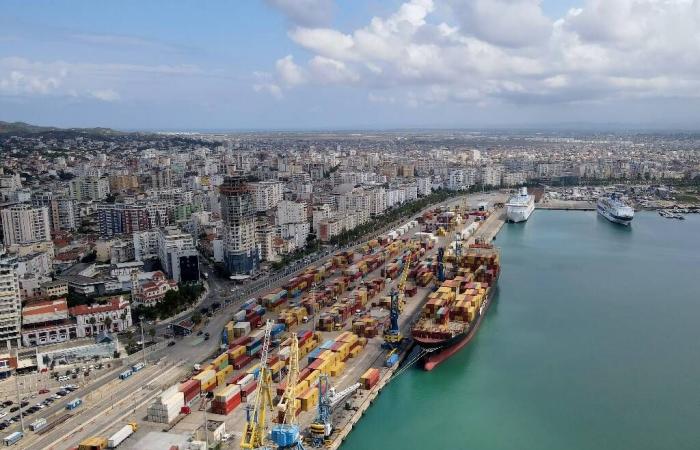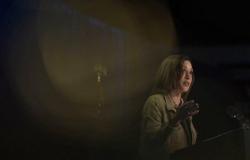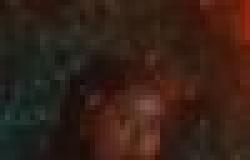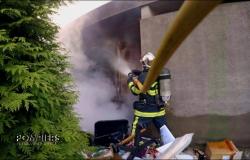
It all starts in Elbasan, in the center of the country. The steel town produces tons of waste that is frequently sent elsewhere? a global business, which sees many Western countries outsourcing the management of their waste to Asia or Africa.
Regularly denounced by environmental NGOs, the waste trade represents between 44 and 70 billion euros per year according to estimates. For its illegal part, the amounts range from 9 to 11 billion per year according to the Financial Action Task Force (FATF), an intergovernmental body fighting against money laundering and the financing of terrorism.
Across the planet, every year, two billion tonnes of waste are produced. A figure which is expected to increase to 3.4 billion by 2050, according to the World Bank.
Among these billions of tonnes are hazardous waste: these are all those which can prove harmful to human health or the environment due in particular to their chemical reactivity or their toxicity.
To regulate their treatment, a convention exists, that of Basel, signed in 1989 by 53 countries. Among other things, it prevents any OECD member country from sending its waste to a non-member country.
However, Albania is not a member of the OECD, and its ports, like that of Dürres, can ship European waste anywhere.
Iron oxide
At the start of summer 2024, the Sokolaj company buys between 800 and 1,000 tonnes of waste from a company in Elbasan? Kurum international, according to Albanian media. Sokolaj immediately resells the waste to its subsidiary in Croatia, GS Minerals.
Sokolaj and GS Minerals? who refused to speak to AFP? claim that analyzes were carried out by a Croatian laboratory and that it is not toxic waste. Contacted by an AFP journalist, the laboratory refused to confirm.
According to Albanian customs documents consulted by AFP, the two companies presented an invoice for the purchase of “iron oxide” whose export is authorized.
The containers leave Dürres for the large Italian port of Trieste. There, they are loaded onto two Maersk company cargo ships, the Campton and the Candor.
As cargo ships sail along the African coast, an NGO specializing in tracking toxic waste, the Basel Action network (BAN), contacts Maersk. A whistleblower used their “hotline” to warn them: the 102 containers would not simply contain iron oxide, but toxic waste, in this case electric arc furnace dust (EAFD, according to the acronym in English).
This dust, classified as toxic waste by most legislation, generally contains a complex mixture of heavy metals, including zinc, lead and cadmium, as well as other elements such as iron oxide. Their storage must be done under very strict conditions.
Every year, the trade in this type of dust alone generates 1.4 billion euros, “the price people pay to get rid of it”, explains BAN president Jim Puckett.
BAN then asks Maersk to interrupt the route of its boats. The two cargo ships are no longer very far from South Africa, they could stop there to have the contents of the containers analyzed. But the Campton and the Candor pass in radio silence: the transponders are cut off and will not be turned back on until they approach Singapore.
At the same time, BAN warned the Thai authorities, who decided not to authorize the arrival of the containers.
Questioned by AFP, Penchome Saetang, an environmental activist who works with the Thai government, said that “after receiving information from NGOs, the government suspected that it could be EAFD.”
In Singapore, Maersk takes note of the Thai refusal and hands over the containers “to the shipping company which is responsible for returning them to Albania”, namely MSC, explains the Danish carrier interviewed by AFP.
“None of these containers were declared as containing hazardous waste. If they had been declared as containing hazardous waste, Maersk would have refused to transport them,” Maersk adds.
When contacted, MSC “does not wish to comment”.
“Malicious suspicions”
At the end of August, the 102 containers returned to sea. But in Europe, no one wants them.
In Tirana, Prime Minister Edi Rama storms. “Nothing proves that this waste is toxic,” he insists during a question session in Parliament, in which he affirms that Albania will not take back the waste, brushing aside accusations based according to him on “suspicions malicious”, “without certificate of analysis”.
In response, in an open letter to the Albanian authorities, BAN recalls that “if the containers contain dangerous materials, they cannot be shipped to another country without the written consent of the exporting country, Albania, the transit countries, Italy, Malta, Morocco, South Africa and Singapore, and the importing country, Thailand.
“None of these countries have given consent and, therefore, if the containers are found to contain hazardous waste, the shipments constitute “illicit traffic” within the meaning of Article 9 of the Basel Convention . A criminal offense,” recalls the NGO.
The Dürres public prosecutor’s office has for its part opened an investigation for “smuggling of prohibited goods” and “abuse of power”, in cooperation with the European Anti-Fraud Office (OLAF), according to a press release.
On September 26, the boats loaded with 102 containers were in Egypt for one, and in Italy for the other.
Will we one day know if they are actually transporting toxic waste?
“We could be wrong,” admits Jim Puckett, “but I doubt it.”





